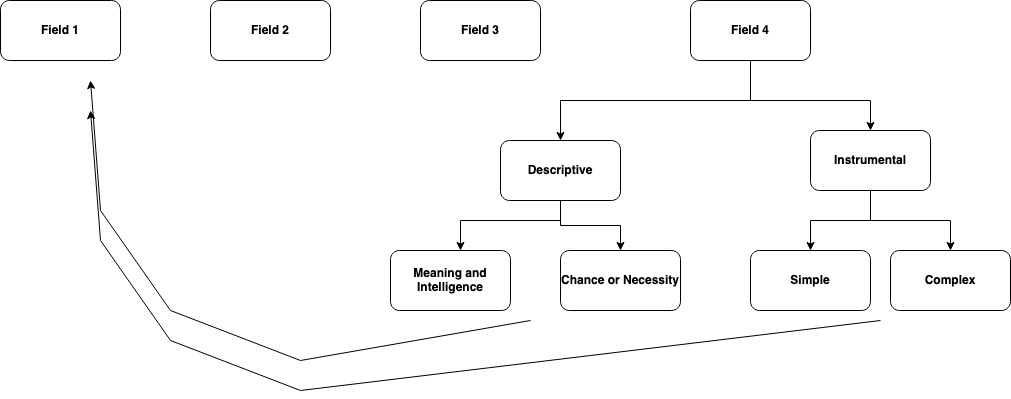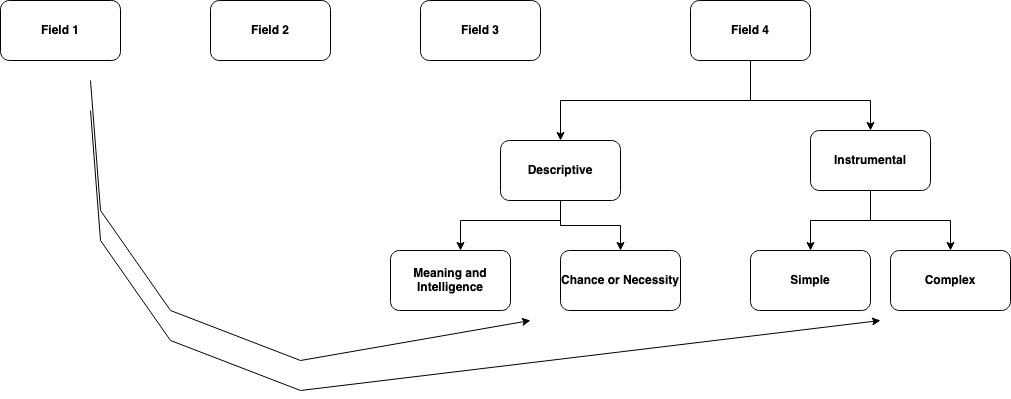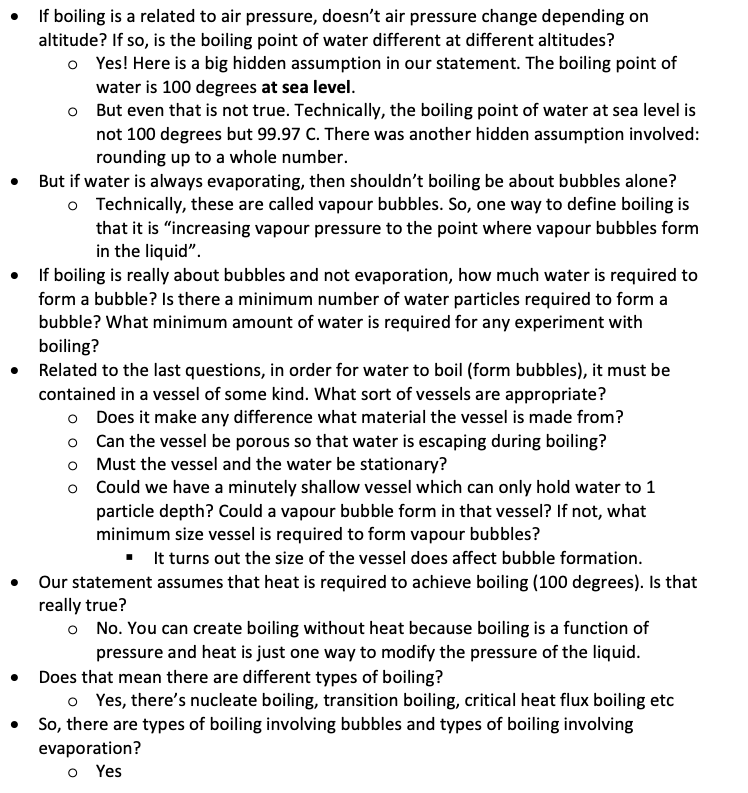Earlier this month there was what might seem like a trivial news story here in Australia. The federal government denied a request by Qatar Airways to increase the number of flights it makes to Australia. We were told this wasn’t in the “national interest” even though it would lower airfare prices for Australian consumers and would, according to the tourism industry, significantly increase the number of tourists coming to the country.
There are a couple of ironies in this story. Firstly, Qantas began life as a private company, was nationalised in 1947 and then privatised again in the big “free market” push of the early 90s. You might think the whole point of privatisation and the “free market” was to, I dunno, increase competition and stuff. Why wouldn’t the Australian government welcome the Qatar Airways bid? Could it have anything to do with the fact that, at almost the same time, the CEO of Qantas did a big publicity stunt with the Prime Minister about an upcoming referendum here in Australia.
The two events gave a clear you-scratch-my-back-and-I’ll-scratch-yours vibe. Of course, it’s not just Qantas, but seemingly every large Australian corporate that is pushing the government’s line on the referendum. Why is corporate Australia unanimously on the government’s side in a referendum that it looks like most of the public does not support? How can that happen in a “privatised” economy where companies are supposed to be on the side of the customers?
The second irony is that the challenge in this case comes from Qatar Airways, which was founded by the government of Qatar about the same time that Qantas was privatised (1993). Qatar is an ex-British protectorate and, in a roundabout way, so is Australia. So we now have two ex-British protectorates arguing over what was always the core imperialist question: who should be able to do business where. The nominally private company of Qantas receiving a helping hand from the nominally impartial Australian government is a pattern seen countless times since the age of imperialism began in the 19th century.
So, all this looks a lot like imperialism. I’m going to give it the name Imperialism 3.0. It’s the form of imperialism that began with the neoliberal reforms of the 1980s and 1990s.
Imperialism 1.0 was mostly driven by private companies. Government was involved to the extent that many of these private companies were owned and controlled by men who were either in the government themselves or had close personal or financial ties with people who were in government.
In Imperialism 2.0, the government was in the driver’s seat. This was the post-Great Depression economy where governments had to step in to stabilise markets.
In Imperialism 3.0, it’s not clear who is running things. The line between private enterprise and state is increasingly blurred, as the recent Qantas decision showed.
A classic account of the transition from Imperialism 1.0 to 2.0 and the various shenanigans that went on at that time is Timothy Mitchell’s book Carbon Democracy. We might say that Imperialism 1.0 was the age of coal, Imperialism 2.0 the age of oil. Mitchell’s book maps the change between the two and how this affected politics. Continuing the pattern, Imperialism 3.0 would map to “renewable energy”. It’s a sobering thought to consider that if the political manifestation of Imperialism 1.0 was robber baron capitalism, and 2.0 was social democracy, 3.0 may very well be totalitarianism.
The correspondence between energy source and politics is not arbitrary. Mitchell’s book goes into detail about how the transition from coal to oil changed politics not just in western nations but in the middle east.
One of the more poignant stories from Mitchell’s book is from 1910 when the company that is now called BP discovered the enormous oil fields of Iran. The problem they had at that time was that there was no market for the product. Kerosene was still the main use of oil in those days, but the sulphur-heavy Iranian oil was not suitable for kerosene.
The company floated on the London stock exchange anyway. In their prospectus they said that the Iranian oil would be sold to the British Navy to use in new oil-powered ships. This was a lie. The navy had already knocked back the company’s entreaties and so the prospectus had to be updated to say that there were no real customers for the oil.
Nevertheless, the company continued lobbying government and, about three years later, it was none other than Winston Churchill who signed a deal for the Iranian oil with BP and then got it through parliament in, shall we say, less-than-honest fashion. You might call this an early example of the military-industrial complex but it’s also a prime example of the kind of imperialism that began in the 19th century: the union of private enterprise and government in foreign business/political dealings.
Imperialism 1.0 was mostly run by the European colonial powers Britain, France and Germany. It was highly disruptive. It relied on secret deals involving a complex web of domestic politics, private corporate and banking interests and international diplomacy. Eventually, this all led to WW1. The Treaty of Versailles included clauses like the one that said Deutsche Bank would have to relinquish its ownership of the Berlin-Baghdad railway.
Why would a peace treaty include a clause about a nominally private business issue? Well, the intrigue, deception and sabotage that went on around the railway was a big reason why the war began in the first place. The geopolitics was that Britain did not want to allow Germany access to the oil of the region. There were similar issues at play in most of the middle east and Africa at the time. It was impossible to say where private enterprise ended and politics began since Imperialism 1.0 was a tag team effort between enterprise and government.
In one sense, WW1 ended Imperialism 1.0, although the Great Depression was the final nail in the coffin. After that, governments took a much larger role in markets to ensure stability and, presumably, to simplify the politics. I’m calling that Imperialism 2.0. One of the things it involved was the nationalisation agenda.
I have mentioned that, here in Australia, Qantas was nationalised in 1947. An identical pattern occurred in the electricity sector as I outlined in detail in a post earlier this year. The electricity sector in Australia began with private enterprise, was then nationalised and finally privatised again in the early 90s. We’ll look at that in more detail in a minute.
Imperialism 2.0 was driven by the transition from coal to oil. It created our modern concept of the “economy”. It did so on the back of the exponential growth that oil facilitated. “The economy” could not just run by itself, however. That’s what the Great Depression had shown. It needed technocrats to ensure a balance of supply and demand. Imperialism 1.0 was about ensuring the supply of oil. Imperialism 2.0 was about creating demand for its use. The post-war consumer economy was one of the mechanisms to control the demand side of the equation. The marketing, advertising and flashing neon signs were all there to get people to buy the things that oil produced.
The oil shock of the 70s was the first big red flashing light that the consumer economy was malfunctioning. It was propped up by new oil discoveries in the 70s and 80s. This brings us to the neoliberal agenda of the early 90s and the beginning of Imperialism 3.0. The nationalisation agenda of Imperialism 2.0 had to be undone. We needed a “free market” again, we were told. This was clearly a lie and the Australian electricity market provides the perfect example to show why it was a lie.
In classical economics, free markets are neither good nor bad. It depends on the context. The trick is to match the market to the context. Where you have a natural monopoly, the most efficient market is a monopoly. A monopoly will give you the lowest prices in those circumstances.
The Australian energy markets are natural monopolies. Here in Victoria, about 200kms east of Melbourne, are enormous coal reserves sitting in a geologically and meteorologically stable region. The Victorian government in the post-war years made the eminently sensible decision to build coal-fired power plants right next to the mine. The whole thing was government-owned and run. It was a monopoly market matched to a natural monopoly; exactly what classical economics says you should do.
This set up was so efficient that it delivered some of the cheapest electricity in the world to Victoria all the way until the early 90s at which point we were told by our politicians that we needed a “free market”. A free market would reduce prices, they said. This never made any sense. As anybody that’s done first year economics knows, you don’t build a free market on top of a natural monopoly. It was wrong in theory and it’s turned out to be wrong in practice. Australia has gone from having some of the cheapest electricity in the world to some of the more expensive.
The privatisation agenda of the 90s was the beginning of Imperialism 3.0. Australia was obviously no longer free to pursue its national economic interest. Whose interest was it serving? The same interest that drove Imperialism 1.0 and 2.0: the “liberal world order”.
Imperialism 3.0 is much like 1.0 in that it involves collusion between nominally private corporations and nominally independent governments. The recent clandestine censorship of social media by western governments is a prime case in point. But that censorship was done against citizens of western nations and here we see the big difference that Imperialism 3.0 has ushered in.
In the first two versions of imperialism, the main goal was to grow demand to match the supply of fossil fuels. That demand was grown among the populations of western nations. In Imperialism 3.0, the task is now to reduce demand. Since that demand was originally created in western populations, it is among western populations that it needs to be reduced.
How do you convince those populations to reduce demand after telling them for decades that “growth” was everything? You do it with censorship and lies. That worked for a couple of decades until Trump and Brexit showed up. These days we are well beyond the lying phase and into the outright gaslighting phase.
It’s a psychological fact that people resent the loss of what they had more than if they never got it in the first place. The citizens of western nations have become used to a certain standard of living and are going to resist that standard of living being taken away from them. In addition, they have at their disposal a nominally democratic system that should allow them to elect somebody who won’t take away their standard of living.
Of course, as many people are starting to realise, there is no political party offering what they want. There is now only a uni-party that represents the interests of Imperialism 3.0. Imperialism 3.0 is about demand destruction. The main purpose of the “climate change” agenda is to convince people to reduce demand. Viruses and lockdowns are the new tool in the toolbox in case demand needs to be destroyed in a hurry.
Is any of this actually necessary or is it a devious agenda by depraved elites who hate us? To some extent, the fact that this is even a question to be asked reveals the problem with Imperialism in general. Imperialism was always run by the elites. Those elites always claimed that they were acting in the public interest but much of that was just self-serving BS. One way to figure out what is in the public interest is to, you know, let the public decide for themselves by telling them what is going on. For a brief window of history, that’s what happened. But it didn’t happen by accident.
With Imperialism 3.0, we have reverted to clandestine forms of executive power. Governments increasingly don’t bother to give answers to basic questions. Why is it in the “national interest” that Qatar Airways not have more flights to Australia? What is the definition of “national interest” in this case and why does it seem to oppose the common sense interests of consumers and tourism businesses?
There was a brief window between the transition from Imperialism 1.0 to 2.0 where the clandestine nature of imperialism was opened to scrutiny and it seemed that the workers and the public really could get their hands on executive power. The battle for that executive power is also a part of the story that Timothy Mitchell recounts in his book. A big part of the reason why we got a modern democracy in the first place is because of the political power that the workers utilised with the advent of fossil fuels.
Imperialism 1.0 maps to the era of coal while 2.0 is the age of oil. One of the main properties that differentiated the two was that the era of coal gave far greater power to the workers. Coal was a local, or at best a national, resource. It required a large labour force to extract it and put it to use. Most importantly, its transportation was able to be easily throttled. All these properties handed organised labour the ability to stop the supply of coal with industrial action and thereby bring entire economies to a halt.
Coal was not just power in the physics sense of the word, it was political power in the hands of organised labour who promptly put it to use to extract higher pay and better conditions from its capitalist owners. That power was then extended into the political sphere with universal suffrage being one of the results.
One of the reasons the elites wanted to transition to oil was that it was produced in foreign countries and would allow governments to bypass national unions. Winston Churchill was well aware of this problem since in 1912 there had been the first national strike of coal miners in Britain. With the outbreak of WW1, many unionists were against the war and there was strike action that threatened the war effort. Following a strike in November 1916, the government of Lloyd George decided to nationalise the coal industry since fighting the war was reliant on the supply of coal.
But there is another part of this story which is highly relevant to our current situation. The workers at that time used their political power to force politicians to be honest about the war aims. In early 1918, under pressure from the unions who were increasingly demanding peace, Lloyd George addressed a union meeting and outlined the conditions under which peace could be obtained. The workers had forced to government to actually state why the war was being fought and under what conditions it could end.
This sounds kind of obvious and yet we all live in a time where a war is being fought in Ukraine, where enormous sums of money are being spent and where, unless I missed the memo, our government has not stated why the war is being fought or how it can be made to end. All we get is the usual war propaganda about how the enemy is “evil” and we are all perfect little angels. Of course, there was all this war propaganda in WW1 too. It was only the significant political power that the coal miners of the early 20th century in Britain wielded that forced their government to tell the truth.
Another great example of this power came in 1920. Britain had an enormous number of soldiers in what is now Iraq trying to get control of the oil fields. The labour parties in Britain forced Winston Churchill to declare the cost of keeping the soldiers in Iraq. It was huge. Under pressure again from the labour movement, the government had to make plans to withdraw the soldiers and bring them home.
Again, the same question can be asked in our time: how much money has the United States and its allies spent in Ukraine, and before that in Afghanistan and Iraq, and in whose interest is that money spent? The reason that question does not get asked is because nobody who doesn’t have their snout in the trough has the political power to ask it. We live in Imperialism 3.0. The workers/public no longer have the power force the government to tell the truth. And so a seemingly pointless war continues to rage and nobody has even begun to explain why it is happening. That is the real world effect of the loss of political power that has happened between Imperialism 1.0 and where we are now in 3.0.
The loss of that political power is a long story. Timothy Mitchell argues that one of the main reasons for it is the transition to oil. As far as most of Europe was concerned, oil had to be imported. The labour and infrastructure to refine and transport it was outsourced to places where unions did not exist. This subsequently reduced the political power of unions at home since they could not so easily disrupt the supply of oil as they could with coal.
There were other reasons too that we don’t need to go into. The result was that Imperialism 2.0 was built on an implicit agreement that the unions and workers would forego demands for direct executive decision making power in favour of the implementation of the welfare state. The result was a massive increase in the size of government. With the exponential growth afforded by oil, this system was stable and political issues easily dealt with by buying off whoever complained. Government power might have increased in this time, but beneath the covers it was still the same old tag team of private enterprise and government sharing executive power at the expense of the workers and the public.
In a sense, with Imperialism 3.0, we have rolled all the way back to the robber baron days of 1.0. The unions are now a hollow shell of what they once were. They have become nothing more than bag men for corporate interests. Our democracy is also a hollow shell of what it once was. For most of the last hundred and fifty years, there was a real political battle based on the genuine interests of different social classes. That went away with Imperialism 3.0.
If Imperialism 3.0 had a catch phrase, it would be “we’re all in this together”. Orderly demand destruction is the name of the game. China has figured out how to do this by a form of techno-dystopian authoritarianism. In the West, the battle is being fought in the psychological realm. And we’re reverting back to some of the old familiar tricks of western culture.
After centuries of being told by priests that we were sinners, we now receive the same treatment from “the experts”. It is actually quite amusing that people who would call themselves atheists have taken on the exact job that protestant priests once carried out. They are the moral policeman to the masses. And just like the protestant priests, they are hypocrites of the first order. Of course, many people believe it too. It’s the old Christian need for contrition in secular guise.
But there’s the rub. It is the nation states of the West that are now being targeted not just with familiar old tactics of social control but with many that were once used by western politicians and business interests against foreign countries. Imperialism 3.0 has proletarianised us all. Western governments and their citizens are being divided and conquered in exactly the same way that governments and citizens of the middle east or Africa once were.
There is, of course, one wildcard in all this. The labour movement of the 19th and 20th centuries was an internationalist movement. When the workers pushed back against the imperialists they did so because they saw workers in another country as having the same interests as themselves.
The labour movement might be all but dead, but this time around we have another internationalist technology and that’s the internet. Can the internet provide a check on imperialist power? In some sense, it already has since it was instrumental in the Trump and Brexit votes. Of course, TPTB are already at work to try and make sure something like that doesn’t happen again. History does not repeat, but it sure does rhyme.








